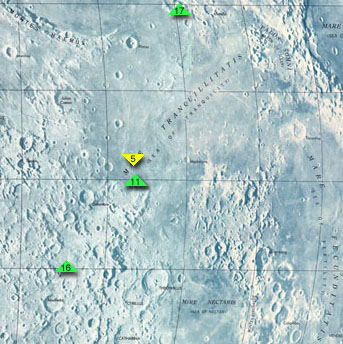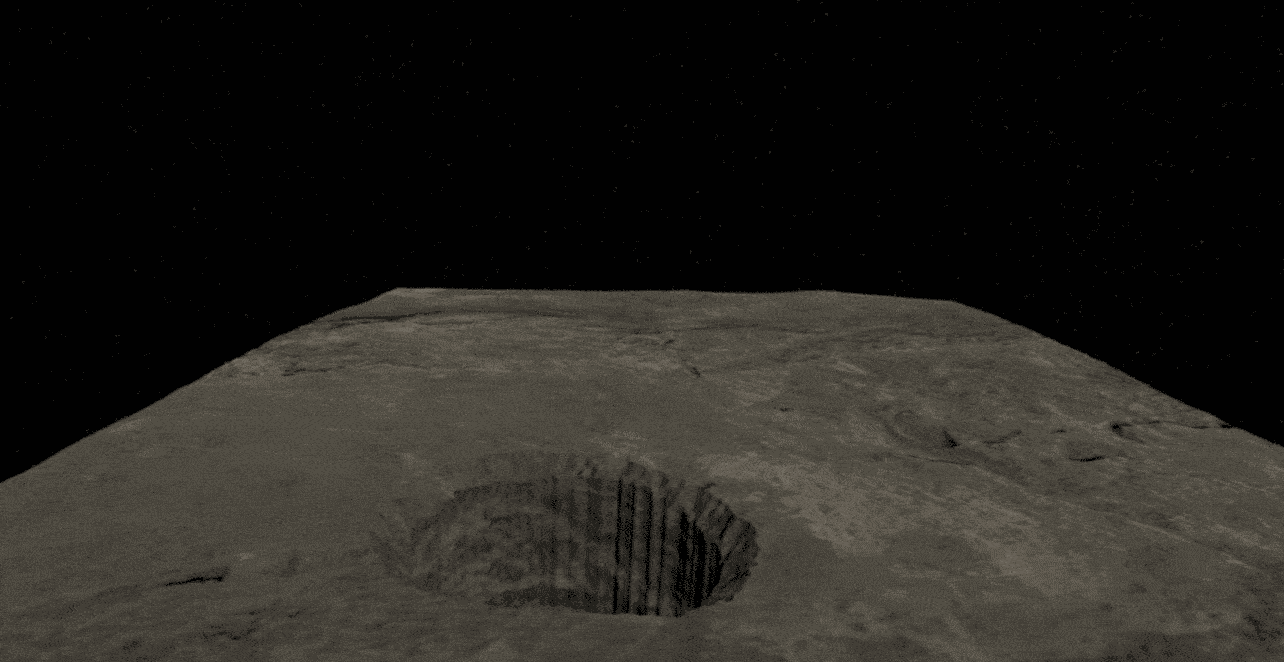A tunnel has been identified under the surface of the Moon for the first time, appropriately on the Sea of Tranquility where humans first set foot. Although this particular spot is not a likely place to build a future colony, where there is one cave there are likely to be more, boosting the prospects for future colonization.
Despite falling launch costs, it will be very expensive to carry anything heavy to the Moon for the foreseeable future. A long-term base, let alone anything permanent, will depend on being able to source as much as possible on location. Much of the focus in recent years has been on finding sources of water, but shelter is crucial as well.
Any future astronauts will need extensive protection from space radiation and the wild swings in temperature the Moon experiences if they are to stay long. We’d also like something tough enough to survive a small asteroid strike of the kind that is common without atmospheric shielding. Much better if there are natural formations that provide this than having to build or dig our own.
“In 2010, as part of the ongoing Luna Reconnaissance Orbiter (LRO) NASA mission, the Miniature Radio-Frequency (Mini-RF) instrument acquired data that included a pit in Mare Tranquilitatis,” said Professor Lorenzo Bruzzone in a statement. “Years later we have reanalysed these data with complex signal processing techniques we have recently developed, and have discovered radar reflections from the area of the pit that are best explained by an underground cave conduit. This discovery provides the first direct evidence of an accessible lava tube under the surface of the Moon.”

The pit is about halfway between the landing sites of Apollo 11 and Apollo 17.
Image credit: NASA
The pit Bruzzone and colleagues studied, known as Mare Tranquillitatis pit, is one of more than 200 that have been observed. Some or all of these appear to be the result of the ceiling of a lava tube caving in. However, just because such a pit exists does not mean there is an underground cave large enough to be useful.
The Mare Tranquillitatis pit is the deepest known, so it seemed a good place to start. It’s around 100 meters (328 feet) across with walls so steep they may be overhanging. That makes it one of the few large enough for internal features to be detected with the resolution the LRO’s radar could provide.
The new study reveals a bright patch on the west side of the pit in the LRO’s side-looking orbital synthetic aperture radar images. Simulations suggest it is a conduit between 30 to 80 meters (98 to 262 feet) long and around 45 meters (148 feet) wide. Not large enough to hold a city perhaps, but a decent location for a lunar village. The floor of the cave is thought to be flat enough to be usable. Although it’s more than 100 meters (328 feet) from the cave entrance to the surface, in the low lunar gravity that might not be a major impediment.
The authors constructed two models of the likely dimensions of the pit and cave, differing primarily in the height of the rock pile produced when the ceiling of the pit fell in and therefore the steepness of the floor.

What it might be like to enter a lunar lava tube.
Image credit: Conor Marsh, University of Manchester/ESA
As is said of New York, the Sea of Tranquility is a great place to visit, but we wouldn’t want to live there. That’s because it lacks the other crucial ingredient for lunar habitation: ice. Frozen water almost certainly exists at the lunar poles, particularly the south pole, inspiring the race to land there.
Ice anywhere near the surface of the flat equatorial plane that is Mare Tranquilitatis would have long since boiled off in the scorching lunar days. Nostalgia about being about 7 degrees due north of where Armstrong took “one small step” won’t compensate for having nothing to drink.
However, the work increases the chances that such lava tubes could exist at the poles, and perhaps more importantly, that we can find them from space with modestly increased resolution. “These caves have been theorized for over 50 years, but it is the first time ever that we have demonstrated their existence,” Bruzzone said.
The study is published in Nature Astronomy.
Source Link: The First Cave Has Been Found On The Moon – Is It Ready For Occupation?